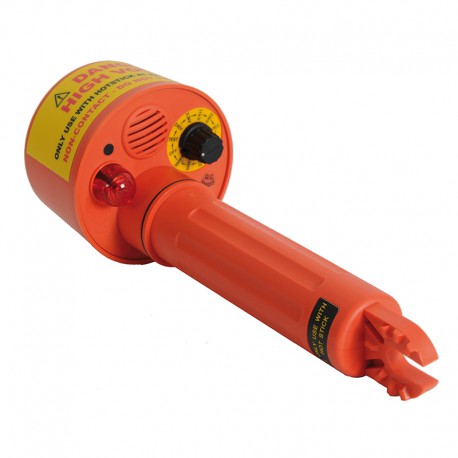Detectors
- P.P.E.
- CPE (Collective protection)
- First aid
- Signalisation
- Lockout / Tagout
-
Tools
-
Insulating tools
- Insulated pliers
- Insulated cable cutter
- Insulated plier and head
- Insulating plastic clamps
- Insulated spanners
- Ratchets
- Insulated torque wrench
- T-handle
- Extensions
- Sockets
- Nut spanners
- T-grip spanner
- Insulated screwdrivers
- Insulated knives
- Insulated hammers
- Insulated tweezers
- Insulated saws
- Insulation cable caps
- Insulator covers
- Insulating wedges
- Insulated tools sets
- Other
- Tools non-insulated
-
Insulating tools
- Detectors
- Insulating rods
- Short-circuiting kits
- Earthing / Grounding
- Reels
- Cable accessories
- Insulators
- Enclosures - Boxes
High voltage Proximity Detector
S175HP
New
The S175 HP is a high voltage proximity detector, physical contact with electrical conductors is not necessary when testing for live lines. This tester works by proximity.
The S175 HP is a high voltage proximity detector, physical contact with electrical conductors is not necessary when testing for live lines. This tester works by proximity.
Its sensor senses the radiated field which surrounds live conductors. Radiated field strength increases with voltage and decreases quickly with distance or earth shielding. The radiated field from a cable of closely bunched conductors supplied by three phase power tends to cancel (See «Limitations of use» paragraph).
Detecting distance of a 250Vac single live wire is approximately 10cm. With a bunched neutral and earth cable, as in a flexible cable, the distance is reduced to 5cm.
Some of the typical uses are : identify and check live cables ; find fault in flexible cables ; check earth equipment ; service neon lightning ; trace live wires ; check high frequency radiation ; detect residual or induced voltages.
Checking or proofing the tester is easy. Switch the sensitivity to 240V and place the dome against a low voltage live conductor or rub the dome with a cloth or against an item of clothing as this generates a static DC which triggers the detection of circuit. The light and beeper should go «on» as if a live wire is being.
It is recommended that the S175 HP is not used in HV yards of mixed voltages. In the presence of mixed voltages, the tester can become unreliable. Problems can arise when the tertiary circuit of a 275/133/11kV transformer is tested. The electric field of the HV and MV bus bars can trigger
the detector when it is about 3m above the ground. This is common with most of the electric field voltage detectors, and the users should be
aware of it. The tester can pick up adjacent circuit to the one being tested and indicate the wrong information to the user.






